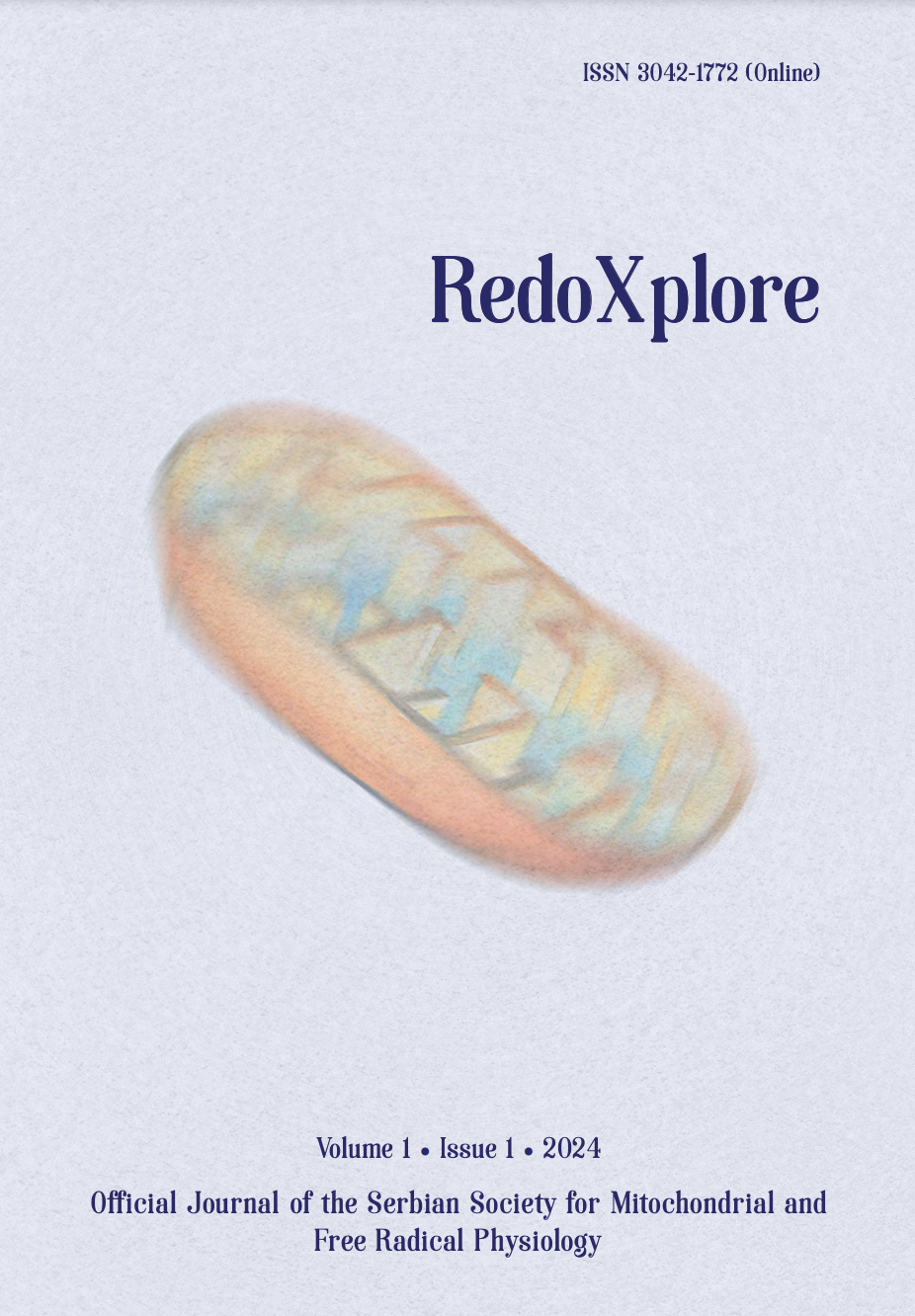
More articles from Volume 1, Issue 1, 2024
REDOX AND METABOLIC REPROGRAMMING OF BREAST CANCER CELLS AND ASSOCIATED ADIPOSE TISSUE - THE CORNERSTONES OF ADAPTIVE TUMOUR BEHAVIOUR
INSULIN MODULATES MITOCHONDRIAL STRUCTURAL AND FUNCTIONAL MOSAICISM IN BROWN ADIPOCYTES
NITRITE MITIGATES OXIDATIVE BURST IN ISCHEMIA/REPERFUSION IN BRAIN SLICES
NITRIC OXIDE, SUPEROXIDE AND PEROXYNITRITE – REDOX REGULATION OF THE CARDIOVASCULAR SYSTEM BY NITRO-OXIDATIVE STRESS AND S-NITROS(YL)ATION
DIETARY NITRATE AS PIVOT ON THE GUT MICROBIOTA-HOST REDOX COMMUNICATION
BIOIMAGING AND CHEMOGENETICS IN REDOX METABOLISM STUDIES
Federal Center of Brain Research and Neurotechnologies, Federal Medical Biological Agency , Moscow , Russia
Editor: Bato Korac
Published: 29.08.2024.
Keynote lectures
Volume 1, Issue 1 (2024)
Abstract
A deep understanding of the roles of redox metabolites and pathways in physiology and pathology requires molecular tools that enable both visualization of these processes and their selective modulation. Over the last two decades, a number of genetically encoded fluorescent biosensors for key redox metabolites have been developed, allowing real-time detection in living systems of varying complexity. Recent developments in this area include the ultrasensitive probe HyPer7 and a new fluorogenic probe, HyPerFAST, which enables even more sensitive H2O2 detection across any chosen optical range, from blue to near-infrared. Complementary to imaging with biosensors, chemogenetics offers tunable substrate-dependent modulation of metabolic pathways, allowing the study of normal cell functioning and modeling dysfunctions caused by abnormal pathway activity and/or metabolite levels. We will present recent developments in this area that include insights on oxidative stress brought about by the use of D-amino acid oxidase (DAO) and intriguing details of the Warburg effect brought about by a new mitochondrial "booster," Grubraw, based on bacterial D-amino acid dehydrogenase.
Citation
Copyright

This work is licensed under a Creative Commons Attribution-NonCommercial-ShareAlike 4.0 International License.
Article metrics
The statements, opinions and data contained in the journal are solely those of the individual authors and contributors and not of the publisher and the editor(s). We stay neutral with regard to jurisdictional claims in published maps and institutional affiliations.






